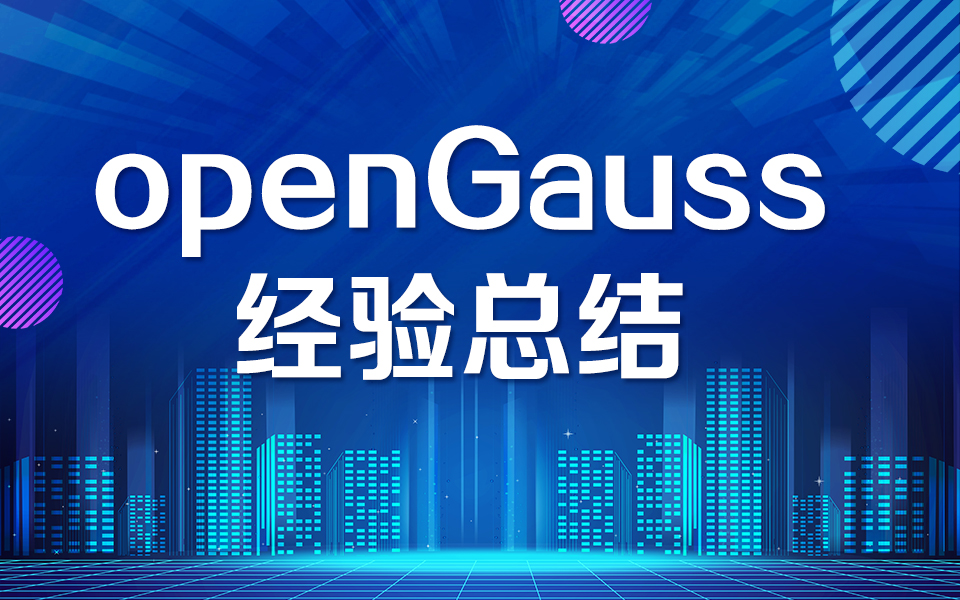Android studio定位oom,android 使用okhttp可能引发OOM的一个点
遇到一个问题: 需要给所有的请求加签名校验以防刷接口;传入请求url及body生成一个文本串作为一个header传给服务端;已经有现成的签名检验方法String doSignature(String url, byte[] body);当前网络库基于com.squareup.okhttp3:okhttp:3.14.2.这很简单了,当然是写一个interceptor然后将request对象的url及
遇到一个问题: 需要给所有的请求加签名校验以防刷接口;传入请求url及body生成一个文本串作为一个header传给服务端;已经有现成的签名检验方法String doSignature(String url, byte[] body);当前网络库基于com.squareup.okhttp3:okhttp:3.14.2.
这很简单了,当然是写一个interceptor然后将request对象的url及body传入就好.于是有:
public class SignInterceptor implements Interceptor {
@NonNull
@Override
public Response intercept(@NonNull Chain chain) throws IOException {
Request request = chain.request();
RequestBody body = request.body();
byte[] bodyBytes = null;
if (body != null) {
final Buffer buffer = new Buffer();
body.writeTo(buffer);
bodyBytes = buffer.readByteArray();
}
Request.Builder builder = request.newBuilder();
HttpUrl oldUrl = request.url();
final String url = oldUrl.toString();
final String signed = doSignature(url, bodyBytes));
if (!TextUtils.isEmpty(signed)) {
builder.addHeader(SIGN_KEY_NAME, signed);
}
return chain.proceed(builder.build());
}
}
okhttp的ReqeustBody是一个抽象类,内容输出只有writeTo方法,将内容写入到一个BufferedSink接口实现体里,然后再将数据转成byte[]也就是内存数组.能达到目的的类只有Buffer,它实现了BufferedSink接口并能提供转成内存数组的方法readByteArray. 这貌似没啥问题呀,能造成OOM?
是的,要看请求类型,如果是一个上传文件的接口呢?如果这个文件比较大呢?上传接口有可能会用到public static RequestBody create(final @Nullable MediaType contentType, final File file)方法,如果是针对文件的实现体它的writeTo方法是sink.writeAll(source);而我们传给签名方法时用到的Buffer.readByteArray是将缓冲中的所有内容转成了内存数组, 这意味着文件中的所有内容被转成了内存数组, 就是在这个时机容易造成OOM! RequestBody.create源码如下:
public static RequestBody create(final @Nullable MediaType contentType, final File file) {
if (file == null) throw new NullPointerException("file == null");
return new RequestBody() {
@Override public @Nullable MediaType contentType() {
return contentType;
}
@Override public long contentLength() {
return file.length();
}
@Override public void writeTo(BufferedSink sink) throws IOException {
try (Source source = Okio.source(file)) {
sink.writeAll(source);
}
}
};
}
可以看到实现体持有了文件,Content-Length返回了文件的大小, 内容全部转给了Source对象。
这确实是以前非常容易忽略的一个点,很少有对请求体作额外处理的操作,而一旦这个操作变成一次性的大内存分配, 非常容易造成OOM. 所以要如何解决呢? 签名方法又是如何处理的呢? 原来这个签名方法在这里偷了个懒——它只读取传入body的前4K内容,然后只针对这部分内容进行了加密,至于传入的这个内存数组本身多大并不考虑,完全把风险和麻烦丢给了外部(优秀的SDK!).
快速的方法当然是罗列白名单,针对上传接口服务端不进行加签验证, 但这容易挂一漏万,而且增加维护成本, 要签名方法sdk的人另写合适的接口等于要他们的命, 所以还是得从根本解决. 既然签名方法只读取前4K内容,我们便只将内容的前4K部分读取再转成方法所需的内存数组不就可了? 所以我们的目的是: 期望RequestBody能够读取一部分而不是全部的内容. 能否继承RequestBody重写它的writeTo? 可以,但不现实,不可能全部替代现有的RequestBody实现类, 同时ok框架也有可能创建私有的实现类. 所以只能针对writeTo的参数BufferedSink作文章, 先得了解BufferedSink又是如何被okhttp框架调用的.
BufferedSink相关的类包括Buffer, Source,都属于okio框架,okhttp只是基于okio的一坨, okio没有直接用java的io操作,而是另行写了一套io操作,具体是数据缓冲的操作.接上面的描述, Source是怎么创建, 同时又是如何操作BufferedSink的? 在Okio.java中:
public static Source source(File file) throws FileNotFoundException {
if (file == null) throw new IllegalArgumentException("file == null");
return source(new FileInputStream(file));
}
public static Source source(InputStream in) {
return source(in, new Timeout());
}
private static Source source(final InputStream in, final Timeout timeout) {
return new Source() {
@Override public long read(Buffer sink, long byteCount) throws IOException {
try {
timeout.throwIfReached();
Segment tail = sink.writableSegment(1);
int maxToCopy = (int) Math.min(byteCount, Segment.SIZE - tail.limit);
int bytesRead = in.read(tail.data, tail.limit, maxToCopy);
if (bytesRead == -1) return -1;
tail.limit += bytesRead;
sink.size += bytesRead;
return bytesRead;
} catch (AssertionError e) {
if (isAndroidGetsocknameError(e)) throw new IOException(e);
throw e;
}
}
@Override public void close() throws IOException {
in.close();
}
@Override public Timeout timeout() {
return timeout;
}
};
}
Source把文件作为输入流inputstream进行了各种读操作, 但是它的read方法参数却是个Buffer实例,它又是从哪来的,又怎么和BufferedSink关联的? 只好再继续看BufferedSink.writeAll的实现体。
BufferedSink的实现类就是Buffer, 然后它的writeAll方法:
@Override public long writeAll(Source source) throws IOException {
if (source == null) throw new IllegalArgumentException("source == null");
long totalBytesRead = 0;
for (long readCount; (readCount = source.read(this, Segment.SIZE)) != -1; ) {
totalBytesRead += readCount;
}
return totalBytesRead;
}
原来是显式的调用了Source.read(Buffer,long)方法,这样就串起来了,那个Buffer参数原来就是自身。
基本可以确定只要实现BufferedSink接口类, 然后判断读入的内容超过指定大小就停止写入就返回就可满足目的, 可以名之FixedSizeSink.
然而麻烦的是BufferedSink的接口非常多, 将近30个方法, 不知道框架会在什么时机调用哪个方法,只能全部都实现! 其次是接口方法的参数有很多okio的类, 这些类的用法需要了解, 否则一旦用错了效果适得其反. 于是对一个类的了解变成对多个类的了解, 没办法只能硬着头皮写.
第一个接口就有点蛋疼: Buffer buffer(); BufferedSink返回一个Buffer实例供外部调用, BufferedSink的实现体即是Buffer, 然后再返回一个Buffer?! 看了半天猜测BufferedSink是为了提供一个可写入的缓冲对象, 但框架作者也懒的再搞接口解耦的那一套了(唉,大家都是怎么简单怎么来). 于是FixedSizeSink至少需要持有一个Buffer对象, 它作实际的数据缓存,同时可以在需要Source.read(Buffer ,long)的地方作为参数传过去.
同时可以看到RequestBody的一个实现类FormBody, 用这个Buffer对象直接写入一些数据:
private long writeOrCountBytes(@Nullable BufferedSink sink, boolean countBytes) {
long byteCount = 0L;
Buffer buffer;
if (countBytes) {
buffer = new Buffer();
} else {
buffer = sink.buffer();
}
for (int i = 0, size = encodedNames.size(); i < size; i++) {
if (i > 0) buffer.writeByte('&');
buffer.writeUtf8(encodedNames.get(i));
buffer.writeByte('=');
buffer.writeUtf8(encodedValues.get(i));
}
if (countBytes) {
byteCount = buffer.size();
buffer.clear();
}
return byteCount;
}
有这样的操作就有可能限制不了缓冲区大小变化!不过数据量应该相对小一些而且这种用法场景相对少,我们指定的大小应该能覆盖的了这种情况。
接着还有一个接口BufferedSink write(ByteString byteString), 又得了解ByteString怎么使用, 真是心力交瘁啊...
@Override public Buffer write(ByteString byteString) {
byteString.write(this);
return this;
}
Buffer实现体里可以直接调用ByteString.write(Buffer)因为是包名访问,自己实现的FixedSizeSink声明在和同一包名package okio;也可以这样使用,如果是其它包名只能先转成byte[]了, ByteString应该不大不然也不能这么搞(没有找到ByteString读取一段数据的方法):
@Override
public BufferedSink write(@NotNull ByteString byteString) throws IOException {
byte[] bytes = byteString.toByteArray();
this.write(bytes);
return this;
}
总之就是把这些对象转成内存数组或者Buffer能够接受的参数持有起来!
重点关心的writeAll反而相对好实现一点, 我们连续读取指定长度的内容直到内容长度达到我们的阈值就行.
还有一个蛋疼的点是各种对象的read/write数据流方向:
Caller.read(Callee)/Caller.write(Callee),有的是从Caller到Callee, 有的是相反,被一个小类整的有点头疼……
最后上完整代码, 如果发现什么潜在的问题也可以交流下~:
public class FixedSizeSink implements BufferedSink {
private static final int SEGMENT_SIZE = 4096;
private final Buffer mBuffer = new Buffer();
private final int mLimitSize;
private FixedSizeSink(int size) {
this.mLimitSize = size;
}
@Override
public Buffer buffer() {
return mBuffer;
}
@Override
public BufferedSink write(@NotNull ByteString byteString) throws IOException {
byte[] bytes = byteString.toByteArray();
this.write(bytes);
return this;
}
@Override
public BufferedSink write(@NotNull byte[] source) throws IOException {
this.write(source, 0, source.length);
return this;
}
@Override
public BufferedSink write(@NotNull byte[] source, int offset,
int byteCount) throws IOException {
long available = mLimitSize - mBuffer.size();
int count = Math.min(byteCount, (int) available);
android.util.Log.d(TAG, String.format("FixedSizeSink.offset=%d,"
"count=%d,limit=%d,size=%d",
offset, byteCount, mLimitSize, mBuffer.size()));
if (count > 0) {
mBuffer.write(source, offset, count);
}
return this;
}
@Override
public long writeAll(@NotNull Source source) throws IOException {
this.write(source, mLimitSize);
return mBuffer.size();
}
@Override
public BufferedSink write(@NotNull Source source, long byteCount) throws IOException {
final long count = Math.min(byteCount, mLimitSize - mBuffer.size());
final long BUFFER_SIZE = Math.min(count, SEGMENT_SIZE);
android.util.Log.d(TAG, String.format("FixedSizeSink.count=%d,limit=%d"
",size=%d,segment=%d",
byteCount, mLimitSize, mBuffer.size(), BUFFER_SIZE));
long totalBytesRead = 0;
long readCount;
while (totalBytesRead < count && (readCount = source.read(mBuffer, BUFFER_SIZE)) != -1) {
totalBytesRead = readCount;
}
return this;
}
@Override
public int write(ByteBuffer src) throws IOException {
final int available = mLimitSize - (int) mBuffer.size();
if (available < src.remaining()) {
byte[] bytes = new byte[available];
src.get(bytes);
this.write(bytes);
return bytes.length;
} else {
return mBuffer.write(src);
}
}
@Override
public void write(@NotNull Buffer source, long byteCount) throws IOException {
mBuffer.write(source, Math.min(byteCount, mLimitSize - mBuffer.size()));
}
@Override
public BufferedSink writeUtf8(@NotNull String string) throws IOException {
mBuffer.writeUtf8(string);
return this;
}
@Override
public BufferedSink writeUtf8(@NotNull String string, int beginIndex, int endIndex)
throws IOException {
mBuffer.writeUtf8(string, beginIndex, endIndex);
return this;
}
@Override
public BufferedSink writeUtf8CodePoint(int codePoint) throws IOException {
mBuffer.writeUtf8CodePoint(codePoint);
return this;
}
@Override
public BufferedSink writeString(@NotNull String string,
@NotNull Charset charset) throws IOException {
mBuffer.writeString(string, charset);
return this;
}
@Override
public BufferedSink writeString(@NotNull String string, int beginIndex, int endIndex,
@NotNull Charset charset) throws IOException {
mBuffer.writeString(string, beginIndex, endIndex, charset);
return this;
}
@Override
public BufferedSink writeByte(int b) throws IOException {
mBuffer.writeByte(b);
return this;
}
@Override
public BufferedSink writeShort(int s) throws IOException {
mBuffer.writeShort(s);
return this;
}
@Override
public BufferedSink writeShortLe(int s) throws IOException {
mBuffer.writeShortLe(s);
return this;
}
@Override
public BufferedSink writeInt(int i) throws IOException {
mBuffer.writeInt(i);
return this;
}
@Override
public BufferedSink writeIntLe(int i) throws IOException {
mBuffer.writeIntLe(i);
return this;
}
@Override
public BufferedSink writeLong(long v) throws IOException {
mBuffer.writeLong(v);
return this;
}
@Override
public BufferedSink writeLongLe(long v) throws IOException {
mBuffer.writeLongLe(v);
return this;
}
@Override
public BufferedSink writeDecimalLong(long v) throws IOException {
mBuffer.writeDecimalLong(v);
return this;
}
@Override
public BufferedSink writeHexadecimalUnsignedLong(long v) throws IOException {
mBuffer.writeHexadecimalUnsignedLong(v);
return this;
}
@Override
public void flush() throws IOException {
mBuffer.flush();
}
@Override
public BufferedSink emit() throws IOException {
mBuffer.emit();
return this;
}
@Override
public BufferedSink emitCompleteSegments() throws IOException {
mBuffer.emitCompleteSegments();
return this;
}
@Override
public OutputStream outputStream() {
return mBuffer.outputStream();
}
@Override
public boolean isOpen() {
return mBuffer.isOpen();
}
@Override
public Timeout timeout() {
return mBuffer.timeout();
}
@Override
public void close() throws IOException {
mBuffer.close();
}
}
以上就是本文的全部内容,希望对大家的学习有所帮助,也希望大家多多支持脚本之家。
更多推荐
 已为社区贡献1条内容
已为社区贡献1条内容









所有评论(0)